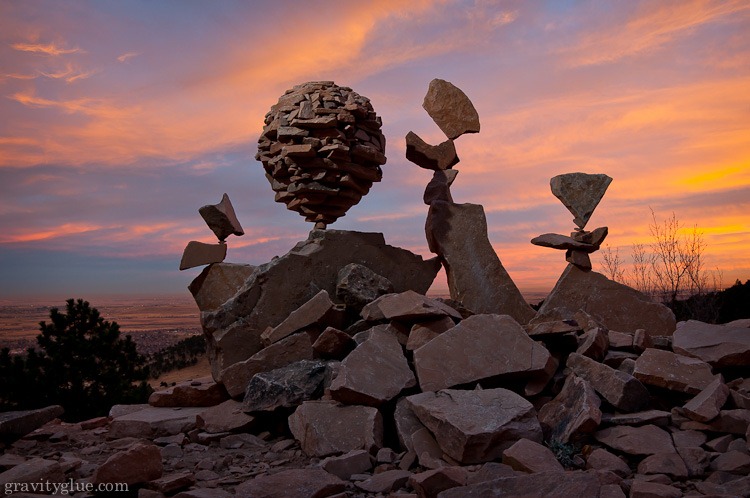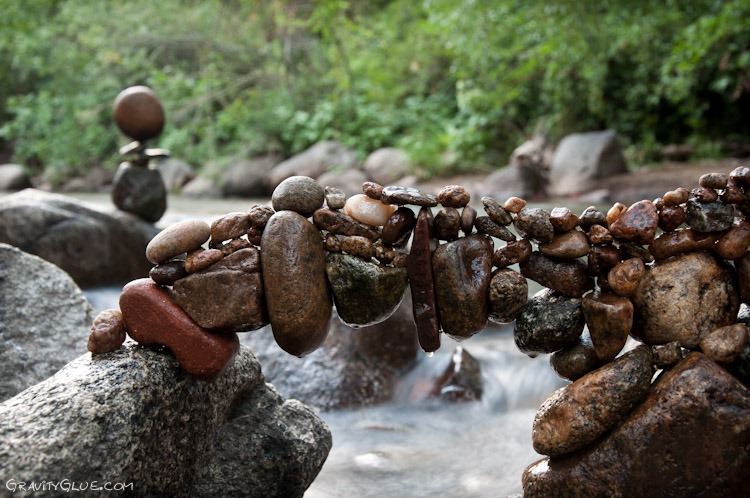Colorado artist Mike Grab creates astonishing towers of balanced
stones using nothing but gravity, and his uncanny ability to find the
natural balance of the stones. Grab says the art of stone balancing has
been practiced by various cultures around the world for centuries
evolving from simple curiosity “into therapeutic ritual, ultimately
nurturing meditative presence, mental well-being, and artistry of
design”.

The
most fundamental element of balancing in a physical sense is finding
some kind of “tripod” for the rock to stand on. Every rock is covered in
a variety of tiny to large indentations that can act as a tripod for
the rock to stand upright, or in most orientations you can think of with
other rocks. By paying close attention to the feeling of the rocks, you
will start to feel even the smallest clicks as the notches of the rocks
in contact are moving over one another. In the finer point balances,
these clicks can be felt on a scale smaller than millimeters. Some point
balances will give the illusion of weightlessness as the rocks look to
be barely touching.
Achieving a challenging balance requires
contemplation of both mental and physical elements simultaneously. You
must “get to know” the rocks you are working with. Some rock characters
will coordinate better with other characters of rocks and vice versa
back and forth right, left, up, or down. The trick I’ve found is to play
and experiment. If you keep at it, a balance will be inevitable if you
make yourself present in that moment of balance. The closer you get to
achieving balance, the more weightless the rock seems to feel, since the
majority of the work is applied upward on the rock you are trying to
balance. Another tip I would suggest is try balancing larger rocks.
using larger rocks only magnifies the feeling of the “clicks”. Also,
more weight will usually have more stability in wind or other erosive
forces.



































